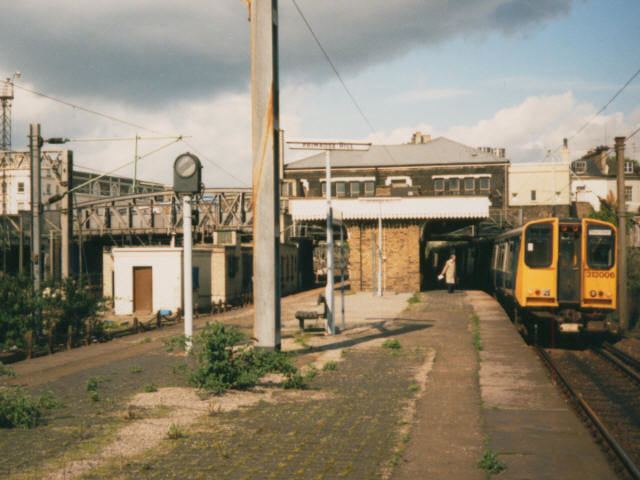Post-grouping LMS Platforms in use 2 (originally 4) | Grid reference TQ279843 | |
 | ||
9 June 1851 Original station opened as Hampstead Road Address London NW8 7LS, United Kingdom Similar Silvertown railway station, Camberwell railway station, New Bermondsey railway st, Morden Road railway st, Burdett Road railway st | ||
Primrose Hill was a railway station at Primrose Hill, in the London Borough of Camden, London, England.
Contents
It was opened on 5 May 1855 as Hampstead Road, replacing an earlier station of that name (opened 9 June 1851). It was renamed Chalk Farm on 1 December 1862 and became Primrose Hill on 25 September 1950. The station closed on 28 September 1992.
History
The station was at the junction of the line west from Camden Road on the North London Line and the West Coast Main Line. There were platforms on both lines; they could be seen from trains using Euston. The platforms serving Euston closed in 1915. The remaining passenger service was, usually peak hours only, between Broad Street and Watford Junction. After Broad Street closed in 1986 the service ran to Liverpool Street, and by the time Primrose Hill station closed only one passenger train a day was using the line.
When the sweep of the North London Line through Hampstead Heath is closed for emergencies or engineering work, the route through Primrose Hill is a viable diversion for North London Line services to access Willesden Junction (Low Level).
The area is served by the nearby Chalk Farm station on the Northern line of the London Underground.
The station building still exists, and is occupied by a shop. It is on Bridge Approach at one end of the pedestrianised bridge over the railway tracks. Nearby is The Roundhouse, an 1847 turntable engine shed, now used as an entertainment venue.
The platform canopies and the buildings supporting them were demolished by Network Rail in December 2008.
Plans
It has been proposed to re-open Primrose Hill station by bringing the short stretch of line between South Hampstead and Camden Road stations back into the regular passenger service by incorporating it into the London Overground network.
